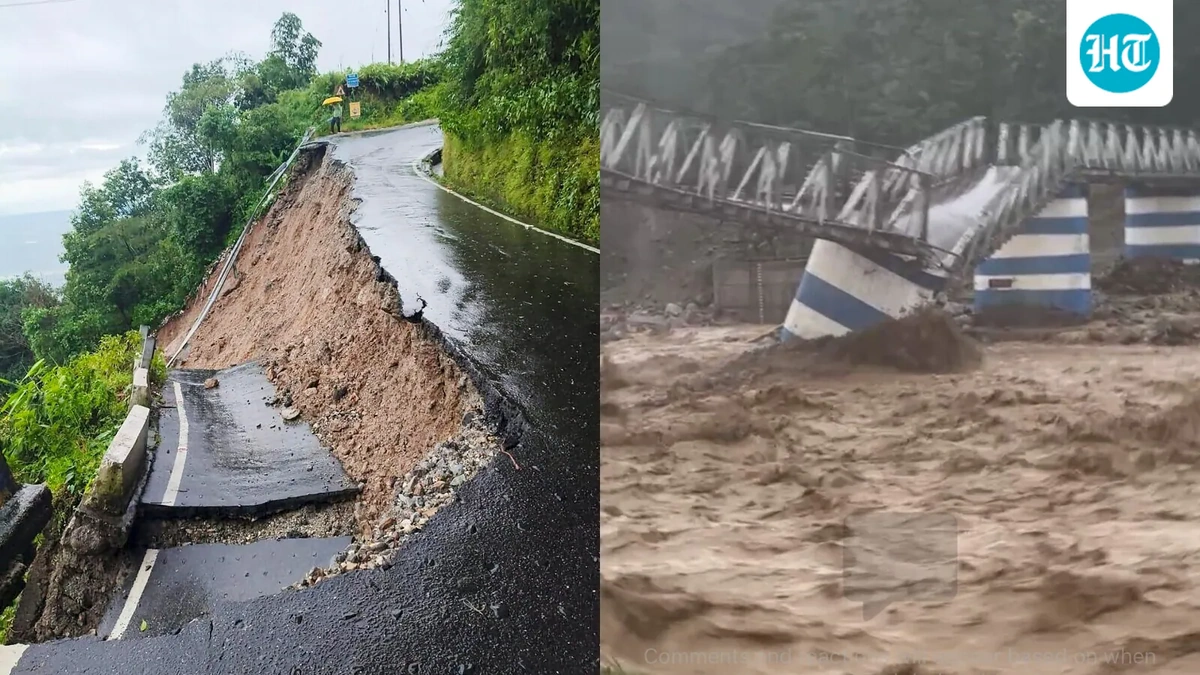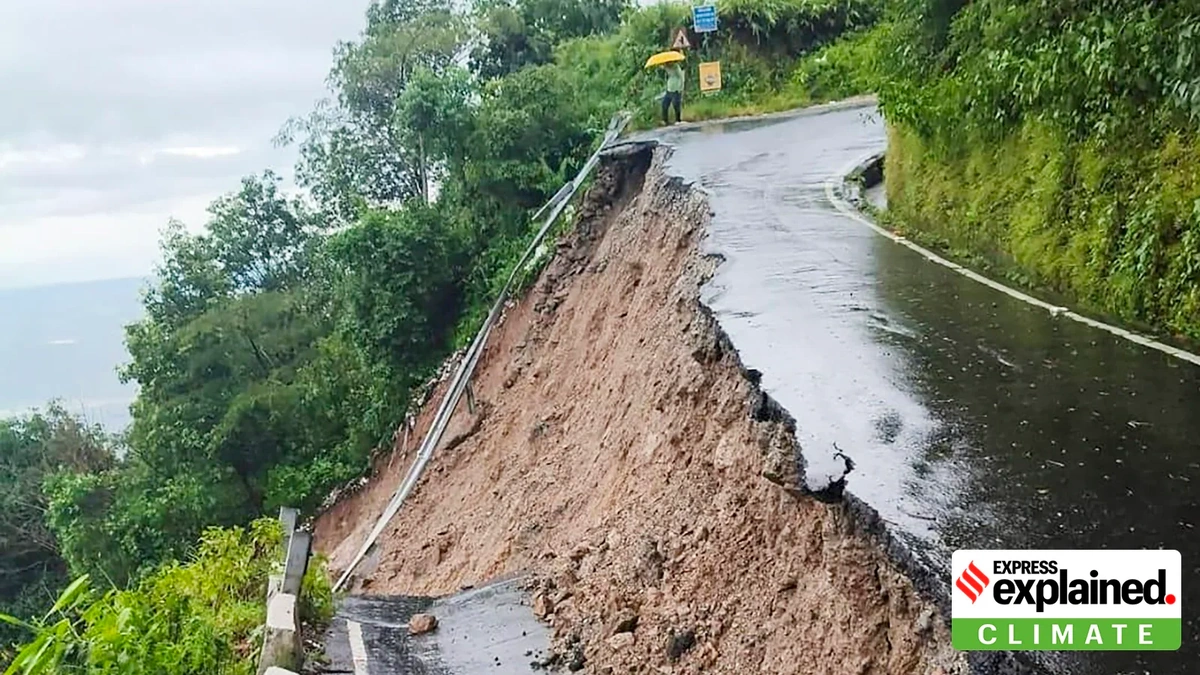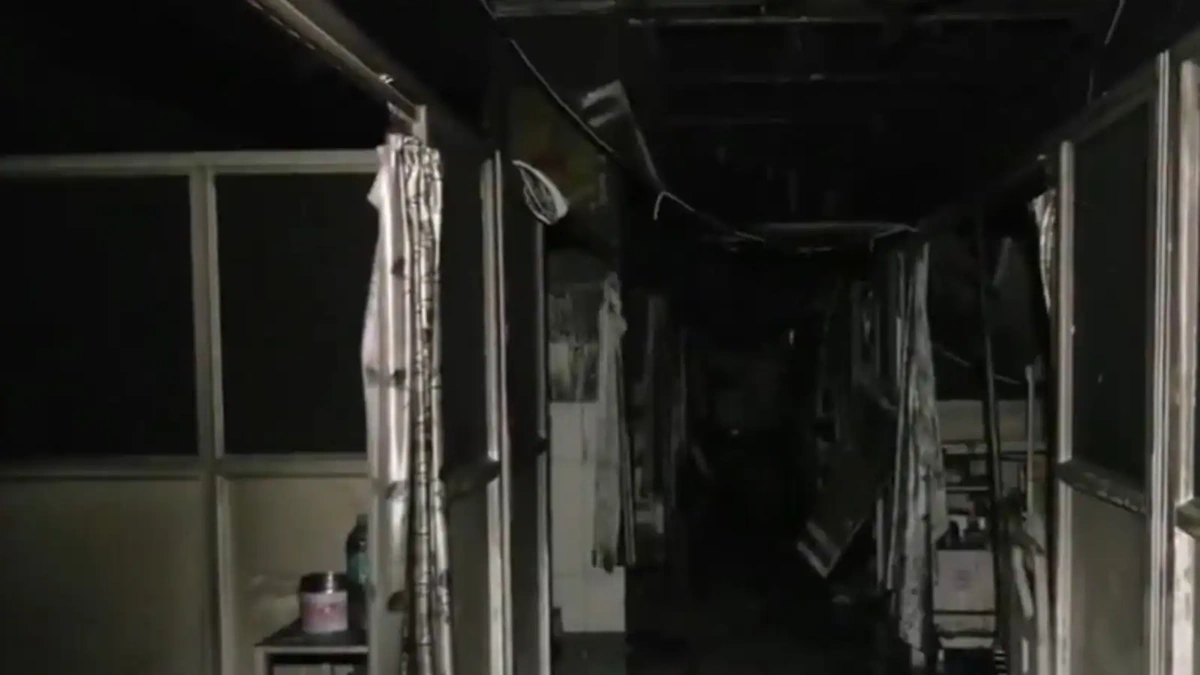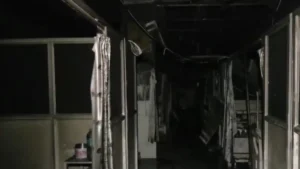Darjeeling Hit by Heavy Rain and Landslide | Bridge Collapses, Rescue Efforts Underway
Darjeeling. The name itself conjures images of rolling tea gardens, crisp mountain air, and breathtaking views. But lately, this Himalayan paradise has been facing a harsh reality: increasingly frequent and devastating landslides. News just broke that heavy rains triggered a significant Darjeeling landslide , causing a bridge to collapse and sparking urgent rescue operations. But let’s be honest, these headlines, while important, often leave us with more questions than answers. What’s really going on? And why does this keep happening?
Here’s the thing: these aren’t just isolated incidents. They are symptoms of a much deeper problem, a complex interplay of climate change, urbanization, and our relationship with the environment. The news focuses on the immediate tragedy, which it must, but I want to dig a little deeper. I want to explore why Darjeeling is so vulnerable and what, if anything, can be done to protect it.
The Fragile Ecosystem | Why Darjeeling is Prone to Landslides

Let’s start with the basics. Darjeeling’s geography makes it inherently susceptible to landslides. It’s located in the Eastern Himalayas, a relatively young and geologically active mountain range. The steep slopes, coupled with the region’s heavy rainfall, create a perfect storm for instability. But that’s not the whole story.
Deforestation plays a major role. The relentless clearing of forests for agriculture, infrastructure development, and timber has stripped away the protective layer of vegetation that once held the soil together. Without the trees’ roots binding the earth, the soil becomes loose and easily erodible, especially during heavy downpours. Soil erosion , therefore, is a key factor.
And then there’s the issue of unplanned urbanization. The rapid growth of towns and cities in the Darjeeling hills has led to construction on unstable slopes, often without proper engineering or environmental safeguards. This adds immense pressure to an already fragile ecosystem.
Climate Change | Amplifying the Threat
Climate change acts as a threat multiplier, exacerbating the existing vulnerabilities. Rising temperatures are causing more intense and erratic rainfall patterns. This means longer dry spells punctuated by sudden, torrential downpours – precisely the kind of weather that triggers landslides. The increased rainfall intensity overwhelms the land’s capacity to absorb water, leading to surface runoff and soil saturation.
What fascinates me is the feedback loop at play here. Deforestation contributes to climate change, which in turn increases the risk of landslides, which further degrades the environment. It’s a vicious cycle that needs to be broken.
Rescue Efforts and the Immediate Aftermath
Of course, in the wake of the recent Darjeeling landslide , the immediate focus is on rescue and relief efforts. Teams are working tirelessly to clear debris, locate missing persons, and provide assistance to those who have been displaced. The collapse of the bridge is a major setback, disrupting transportation and isolating communities. I can’t imagine the stress these families are under. The importance of swift disaster response cannot be overstated.
But beyond the immediate response, we need to think about long-term solutions. How can we rebuild in a way that is more resilient to future disasters? How can we protect vulnerable communities from the impacts of climate change?
Building a Resilient Future | What Can Be Done?
Let me rephrase that for clarity: The solution is not simple. It requires a multi-pronged approach that addresses the root causes of the problem.
First and foremost, we need to prioritize environmental conservation. This means protecting existing forests, promoting reforestation efforts, and implementing sustainable land management practices. Incentivizing local communities to participate in conservation efforts is crucial. Agroforestry, terracing, and other soil conservation techniques can also help stabilize slopes and reduce erosion.
Secondly, we need to adopt more sustainable urban planning practices. This includes enforcing stricter building codes, avoiding construction on unstable slopes, and investing in drainage systems and other infrastructure that can mitigate the risk of landslides. It also means empowering local authorities to make informed decisions about land use planning, incorporating geological surveys and risk assessments into the process.
Thirdly, we need to address the underlying drivers of climate change. This means reducing our carbon footprint, transitioning to renewable energy sources, and promoting energy efficiency. While global action is essential, local communities can also play a role by adopting sustainable lifestyles and advocating for climate-friendly policies.
And perhaps most importantly, we need to raise awareness among the public about the risks of landslides and the importance of disaster preparedness. This includes educating communities about early warning systems, evacuation routes, and emergency response procedures. Public awareness campaigns can also promote responsible environmental behavior and encourage people to participate in conservation efforts.
The Human Cost | Stories from the Ground
Statistics and policy recommendations are important, but it’s easy to lose sight of the human cost of these disasters. Each landslide represents a tragedy for the families and communities affected. It’s a loss of homes, livelihoods, and sometimes, lives. Speaking of families and the need of support, take a look at this .
I initially thought this was straightforward, but then I realized that numbers fail to capture the sheer emotional toll. The anxiety of living in a landslide-prone area, the trauma of witnessing a disaster firsthand, the uncertainty about the future – these are all real and significant challenges that need to be addressed. Providing mental health support and counseling to affected communities is essential.
We must listen to the voices of the people who are most affected by these disasters. Their experiences and insights are invaluable in developing effective solutions. It’s not enough to impose top-down policies; we need to empower local communities to take ownership of their own resilience.
Here’s why this matters: The impact of landslides extends beyond the immediate devastation. It disrupts economic activity, damages infrastructure, and threatens the livelihoods of thousands of people who depend on agriculture, tourism, and other industries. The long-term consequences can be profound, hindering development and exacerbating poverty.
Conclusion | A Call to Action
The recent landslide in Darjeeling is a wake-up call. It’s a reminder that we cannot afford to ignore the growing threat of climate change and environmental degradation. We need to act now to protect vulnerable communities and build a more resilient future. This requires a collective effort from governments, organizations, and individuals. It requires a shift in mindset, from short-term economic gains to long-term sustainability.
What fascinates me is that this isn’t just about saving Darjeeling. It’s about saving ourselves. The challenges facing Darjeeling are mirrored in many other parts of the world. By learning from its experiences, we can develop more effective strategies for managing environmental risks and building a more sustainable future for all.
FAQ
What causes landslides in Darjeeling?
Landslides in Darjeeling are caused by a combination of factors, including steep slopes, heavy rainfall, deforestation, unplanned urbanization, and climate change.
What can be done to prevent landslides?
Preventing landslides requires a multi-pronged approach, including environmental conservation, sustainable urban planning, climate change mitigation, and public awareness campaigns.
How can I help the victims of the landslide?
You can help by donating to reputable organizations that are providing relief and support to the affected communities. You can also raise awareness about the issue and advocate for policies that promote environmental sustainability.
What is the government doing to address the problem?
The government is implementing various measures to address the problem, including investing in infrastructure development, promoting environmental conservation, and providing disaster relief assistance. However, more needs to be done to address the root causes of the problem and build a more resilient future.
Are there any early warning systems in place?
Yes, there are early warning systems in place in some areas, but they need to be improved and expanded to cover more vulnerable communities. Public awareness campaigns can also help people understand how to respond to early warnings.
What is the long-term impact of landslides on Darjeeling?
The long-term impact of landslides on Darjeeling can be profound, hindering development, exacerbating poverty, and disrupting economic activity. Addressing the root causes of the problem is essential to building a more sustainable future for the region.













